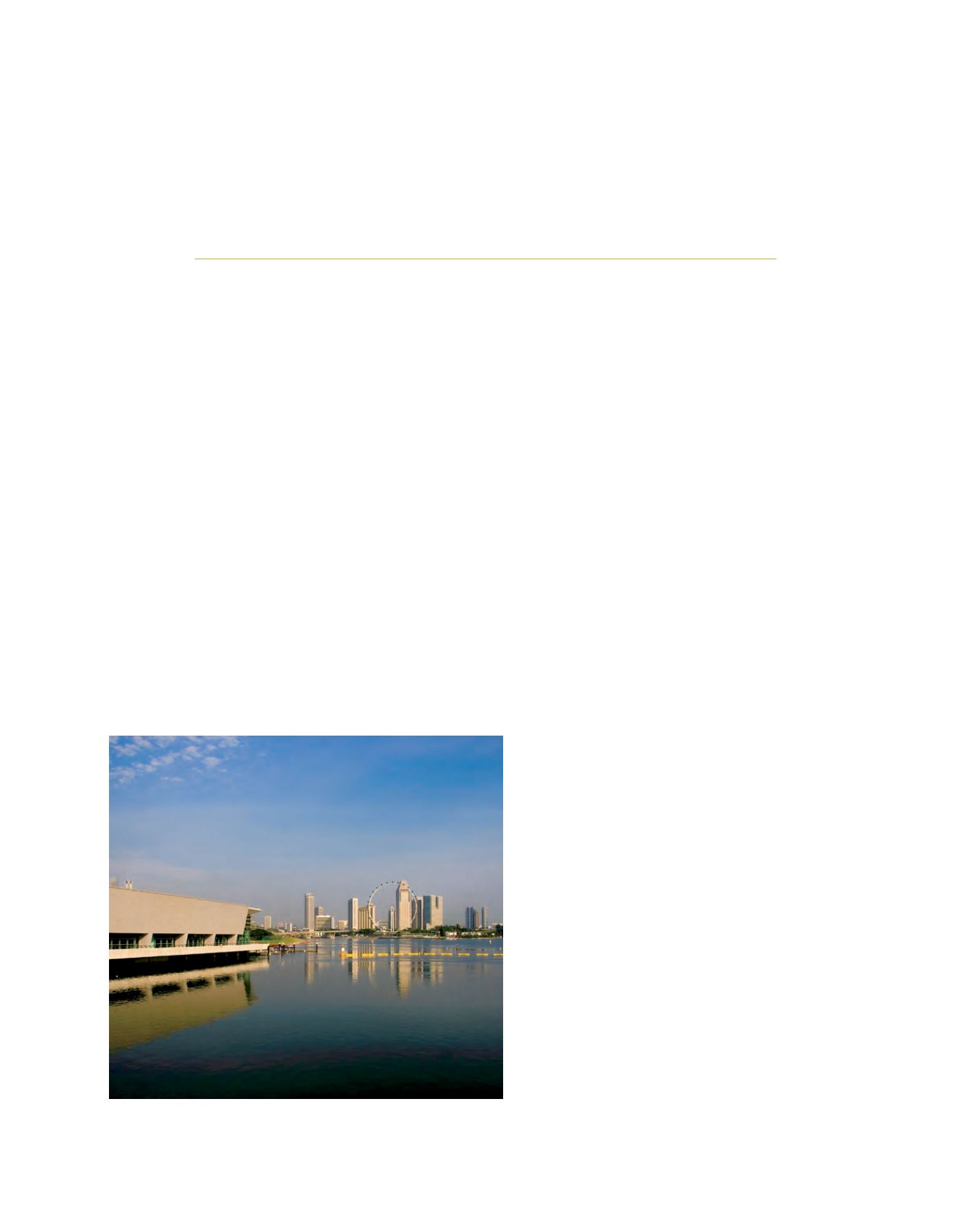

[
] 243
Water resource management and adaptation
initiatives to the challenges of climate
variability and change in Singapore
Chang Chian Wui, Deputy Director Policy and Planning, Public Utilities Board, Singapore
S
ingapore is blessed with some 2,400 millimetres of rainfall
each year. Unfortunately, it is a small island with only 700
square kilometres of land. The growing population and
economy exert pressure on land use, with land for water catch-
ments competing with industry and housing. The lack of land to
collect and store rainwater, high evaporative losses and lack of
natural aquifers has led Singapore to be considered water scarce
by the United Nations, ranked 170th of 190 countries in terms
of freshwater availability.
The Intergovernmental Panel on Climate Change (IPCC) Fourth
Assessment Report (AR4) estimates that temperature rise in
Southeast Asia over the next century will be similar to the global
mean temperature rise of 2.8°C. It also suggests that sea level will
rise close to a global mean of 21-48 centimetres and changes in
annual precipitation will range from –2 per cent to +15 per cent with
a medium of +7 per cent. The projection is broadly for wet season
rainfall increase and dry season rainfall decrease. Extreme events are
likely to become more intense in the region.
The potential impacts are water scarcity, increased
flooding and rising sea level. To better understand these
impacts, the Singapore Government has commissioned a
vulnerability assessment, to be completed in 2009. The
study is conducted by the local university, together with
a team of foreign experts, and is based on IPCC emission
scenarios and global circulation models. It projects the
effects of climate change in the next century – changes
in ambient temperature, sea levels and currents, storm
surges, rainfall intensity and duration, wind patterns
and intensity and resulting impacts on water availability,
flooding, coastal erosion, land loss and slope stability. The
results will facilitate the identification of new adaptation
measures and a review of existing ones.
Integrated water resources management
As Singapore’s integrated water agency, the Public
Utilities Board (PUB) is responsible for the management
of the entire water loop – from storm water collection
to potable water supply, used water collection and
treatment, water reclamation and seawater desalina-
tion. Singapore’s water strategy can be summarized by
PUB’s corporate tagline: ‘Water for All: Conserve, Value,
Enjoy’. ‘Water for All’ refers to the supply strategy of a
diversified and sustainable supply of water. ‘Conserve,
Value, Enjoy’ emphasizes water conservation and PUB’s
approach to involving stakeholders and the community
in its work.
Water for All
A diversified supply system with four different sources
is in place – local catchments, imported water,
‘NEWater’ and desalinated water. ‘The Four National
Taps’ not only meet long-term needs, they also increase
resilience against climate uncertainties. Three are
primary sources. They are, in effect, the ‘first drops’ of
water obtained from the water catchments or the sea.
NEWater is a secondary source created by recycling.
Regarding local catchments – although Singapore
has very limited land, segregation of storm runoffs from
used water, judicious land use, vigilant surveillance and
strict enforcement have enabled half of the area, includ-
ing housing estates and urban zones, to be tapped for
water catchment. The new Marina Reservoir, completed
A
daptation
and
M
itigation
S
trategies
The Marina Barrage creates a reservoir in the city, alleviates floods and offers an
attractive recreation area
Image: PUB
















